Preservation Long Island is pleased to welcome guest blogger, Nicholas Vega, our collections and curatorial summer intern and 2023 Gardiner Young Scholar. As part of his internship, Nicholas researched the meaning behind the provocative seventeenth-century portrait of Elizabeth Tailer Nelson, the mother-in-law of Henry Lloyd (1685–1763) of Queens Village.
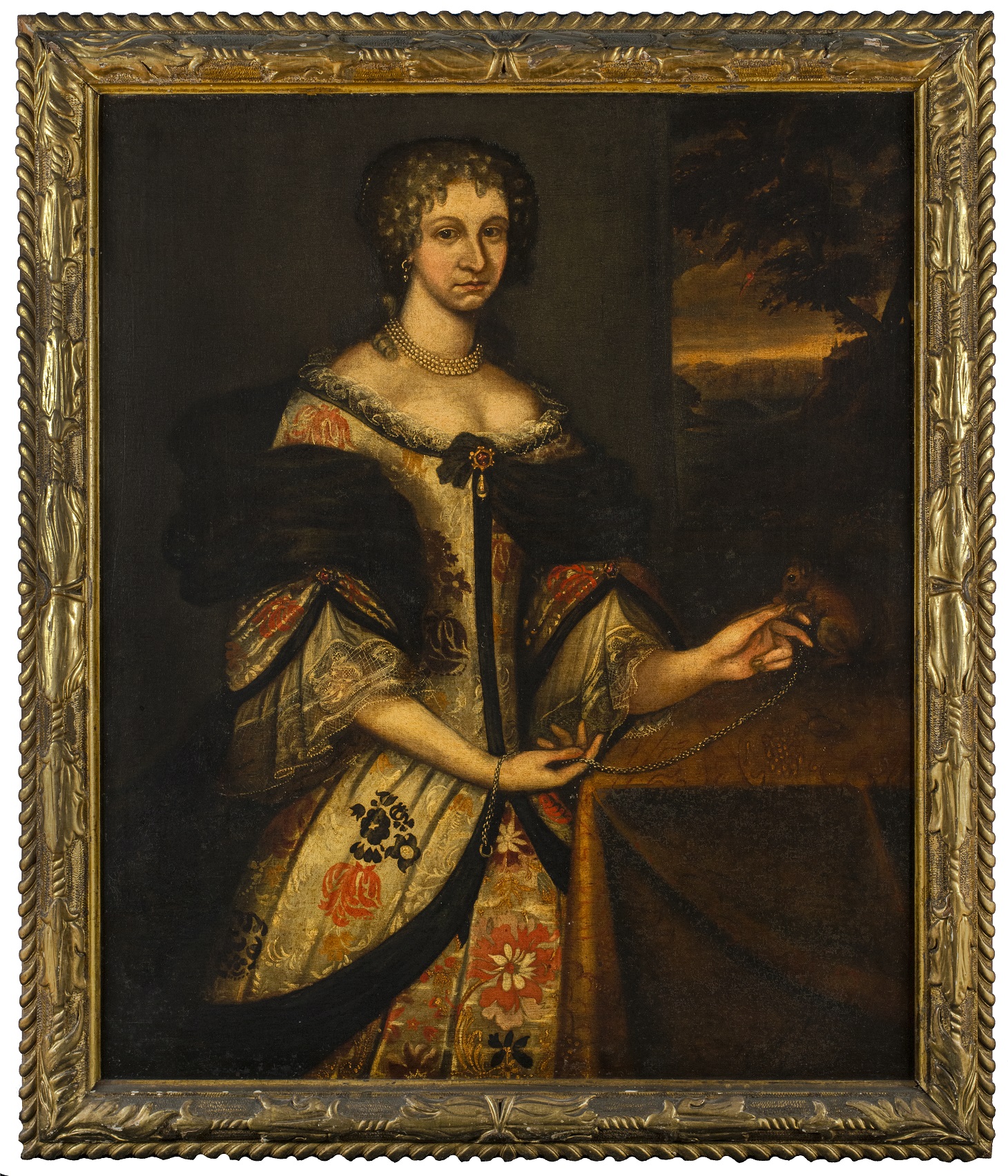
She comes from Boston, of English settler stock, but her silk dress is probably Dutch in design. The artist, though most certainly also of English origin, was probably trained in the Italian mannerist style before settling in North America. The pearls on her neck and the red parrot nestled on a tropical tree—just visible through the open window—evoke an America further south. The most local feature of the painting is probably the red squirrel. Every detail of the portrait of Elizabeth Tailer Nelson (1667–1734) reveals the transatlantic origins of colonial American portraiture and its function in a life interwoven with the Early Modern world.
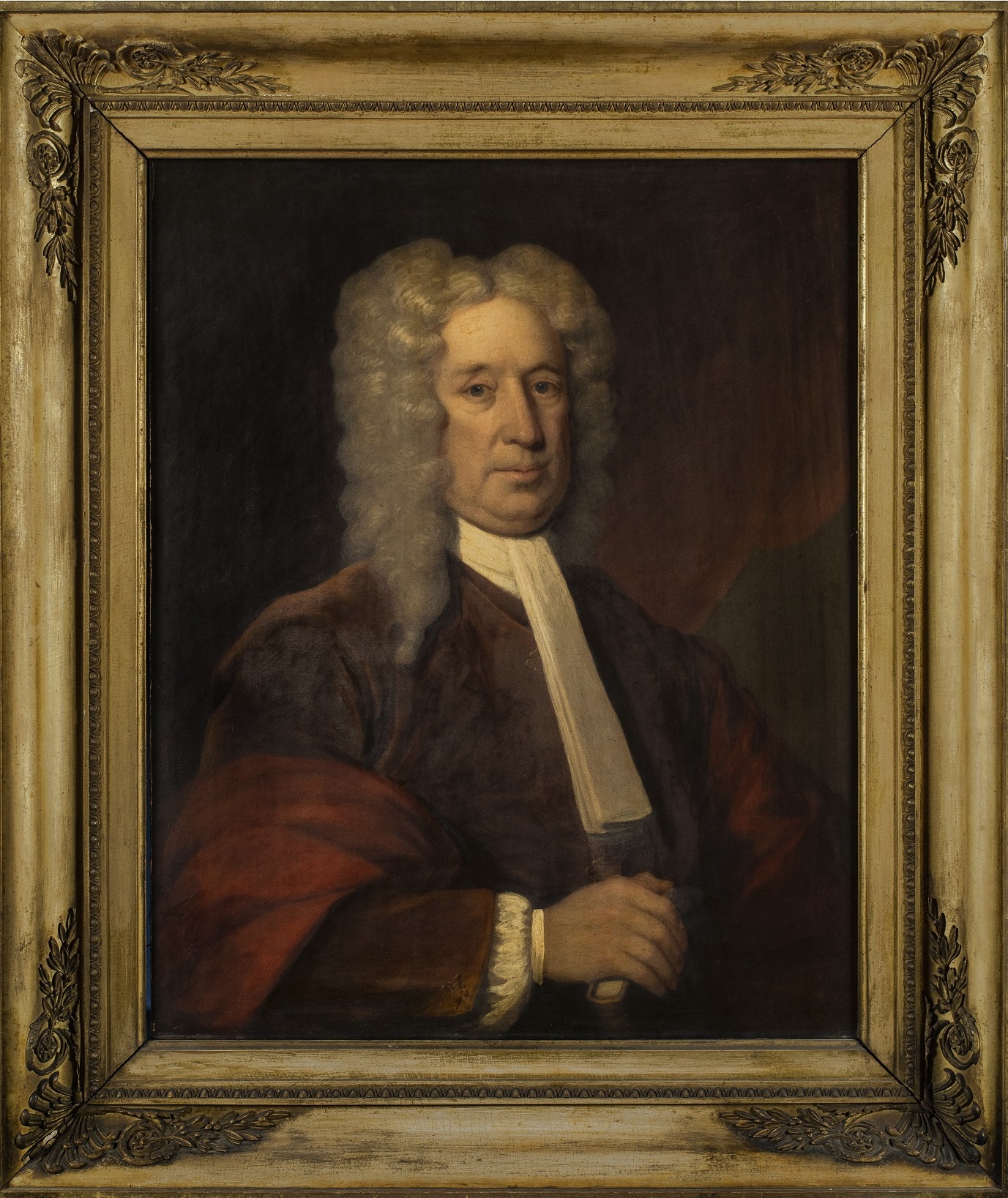
The subject, Elizabeth Tailer Nelson, was the wife of New England merchant John Nelson (1654–1734). Unfortunately, little of her life beyond her marriage is known. Even this sole portrait was probably painted on the occasion of her wedding, around 1685. The Tailers were a wealthy merchant family, and Elizabeth was the heir to a vast holdings of “lands, wharves, and mills” in and around Boston. [1] After her father’s death, John Nelson helped manage the estate, and soon the two were married. Lasting more than fifty years, their union would endure the trials of John Nelson’s transoceanic adventures, leaving Elizabeth to manage the household in her husband’s absence. While John languished in the Bastille for nearly all of the 1690s after a failed raid on French Acadia, Elizabeth kept business as usual on their estate which was worked by a population of enslaved people and indentured servants. [2] When long-time Nelson business associate James Lloyd died in 1693, she also looked after his children. Though it is unlikely Elizabeth could write beyond her signature, she was the core of the extended Nelson family. [3]
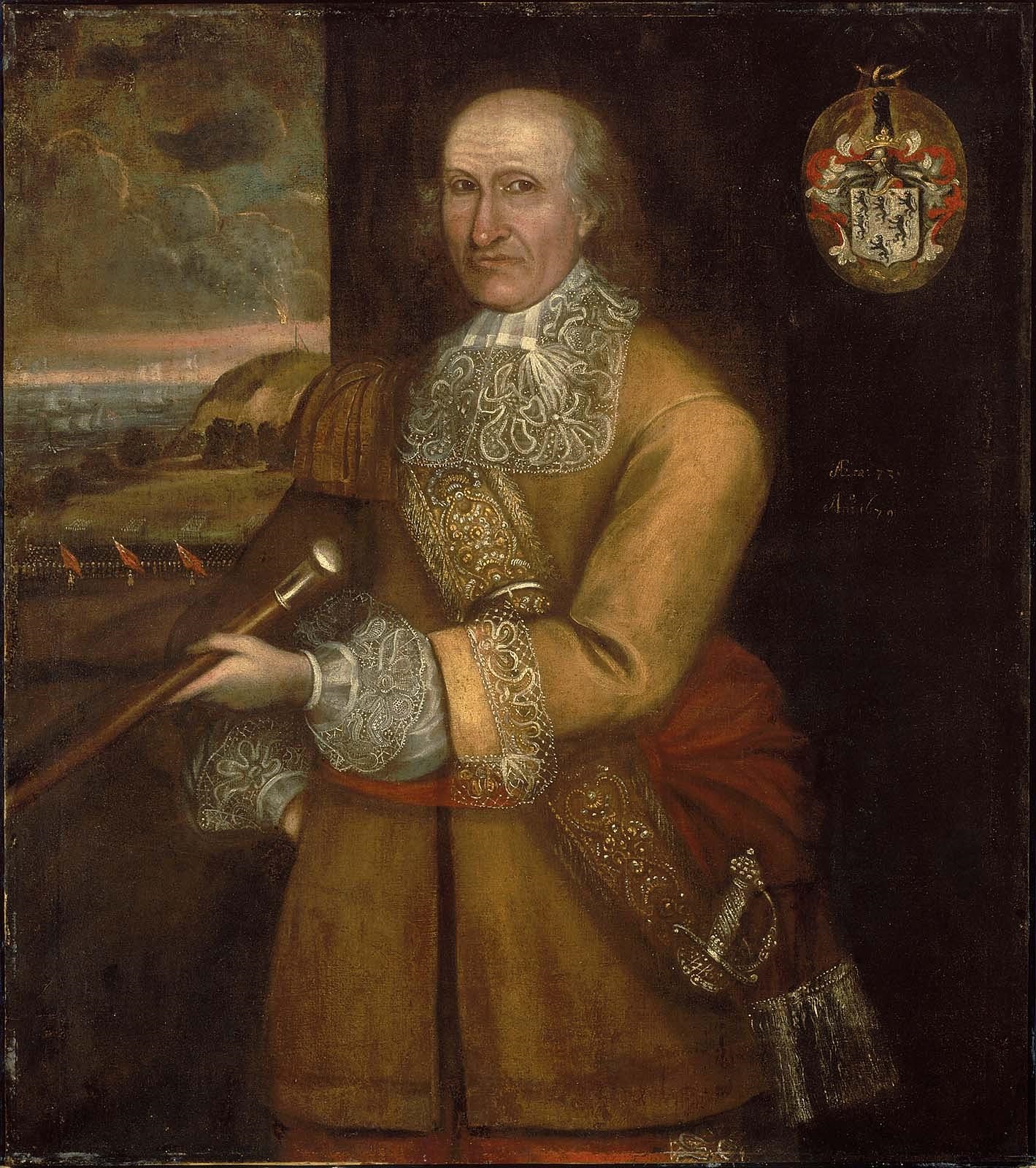
Elizabeth’s portrait is sparse but rich in meaning that preempts her turbulent married life. With one hand, she lightly grasps a chain, holding still a squirrel—a symbol of the young woman’s grace and discipline. With the other, she gently feeds the creature an acorn. Early Modern convention held that a portrait should capture the character of the subject, either real or idealized, through posture and props. [4] This was a subtle art. In the words of eighteenth-century portraitist Gilbert Stuart (1755–1828), too much clutter created a “parade in the background,” straining the attention of the viewer. [5] In male portraiture, the sitters often clutch instruments representing their professions and worldly connections. A book was enough to signify that a man was well-read or a set of scales to indicate his mercantile interests. For portraits of women, however, the symbolism was usually more esoteric. Artists often depicted women in leisurely repose or limply holding a metaphorical object disconnected from her daily life. As historian Deborah Prosser states: “Presumably, [women] did not sit around the house with bunches of grapes in their laps.” Although Elizabeth could very well have had a pet squirrel, it was unlikely the substance of her life. [6] A woman’s portrait spoke to the virtues she possessed, appropriate to the occasion for which it was commissioned. In in this marriage painting, we are told of Elizabeth’s obedience and diligence.
A portrait, however, was not the vision of the artist, but the vision of those who paid for its creation. As the most commonly commissioned type of painting in colonial America, portraiture was an industry, and each painter a factory equipped with a standard set of devices to mold an individual as requested. [7] This was not unique to colonies; American portraiture was closely intertwined with portrait-making in Britain and the rest of Europe. Since artist supplies were not produced locally, and would not be until the nineteenth century, colonial artists had to import their supplies from across the Atlantic. [8] London was the most obvious source, and English standards for canvas sizes, pigments, and tools dominated American colonial painting. In addition, almost all artists were trained abroad; in fact, some portraits were even commissioned overseas. [9]
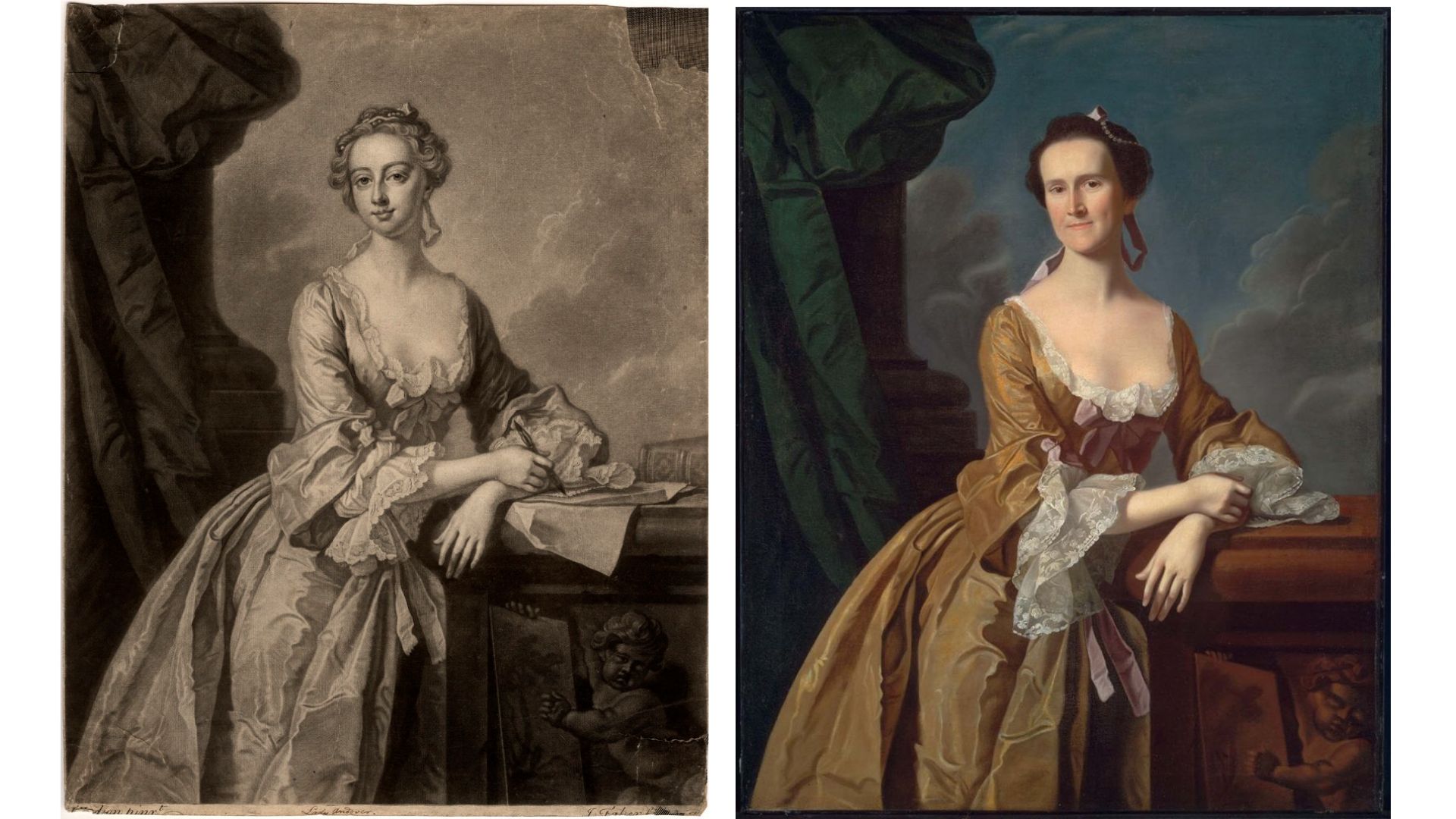
Seventeenth-century New England portraiture, although traditionally assumed to be an isolated scene of self-taught artists, was a highly skilled field filled with apprenticed or studio-taught artists deeply immersed in contemporary Continental practice. [10] Baroque Italian mannerism greatly influenced the colonial style, visible in Elizabeth Tailer Nelson’s elongated, unnatural proportions. But the imitation of European conventions was also literal. Artists in the colonies, especially in the eighteenth century, relied on mezzotints of contemporary portraits as models for their commissions, fashioning their clients into desirable forms while offering a range of stock symbols to individualize this ideal. [11] Patrons were likely aware of, and may have even chosen, the exact prints in which they wished to see themselves. [12] It is unknown if Elizabeth’s portrait directly copied a contemporary print, but its form is evocative. Consider the work of English painter Peter Lely (1618–1680) whose baroque portraits captured King Charles II’s (1630–1685) court in a similar, though more technically skilled, style. In the case of Elizabeth’s portrait, what was most certainly borrowed was the view outside the window: a depiction not of Boston but a fanciful tropical landscape.
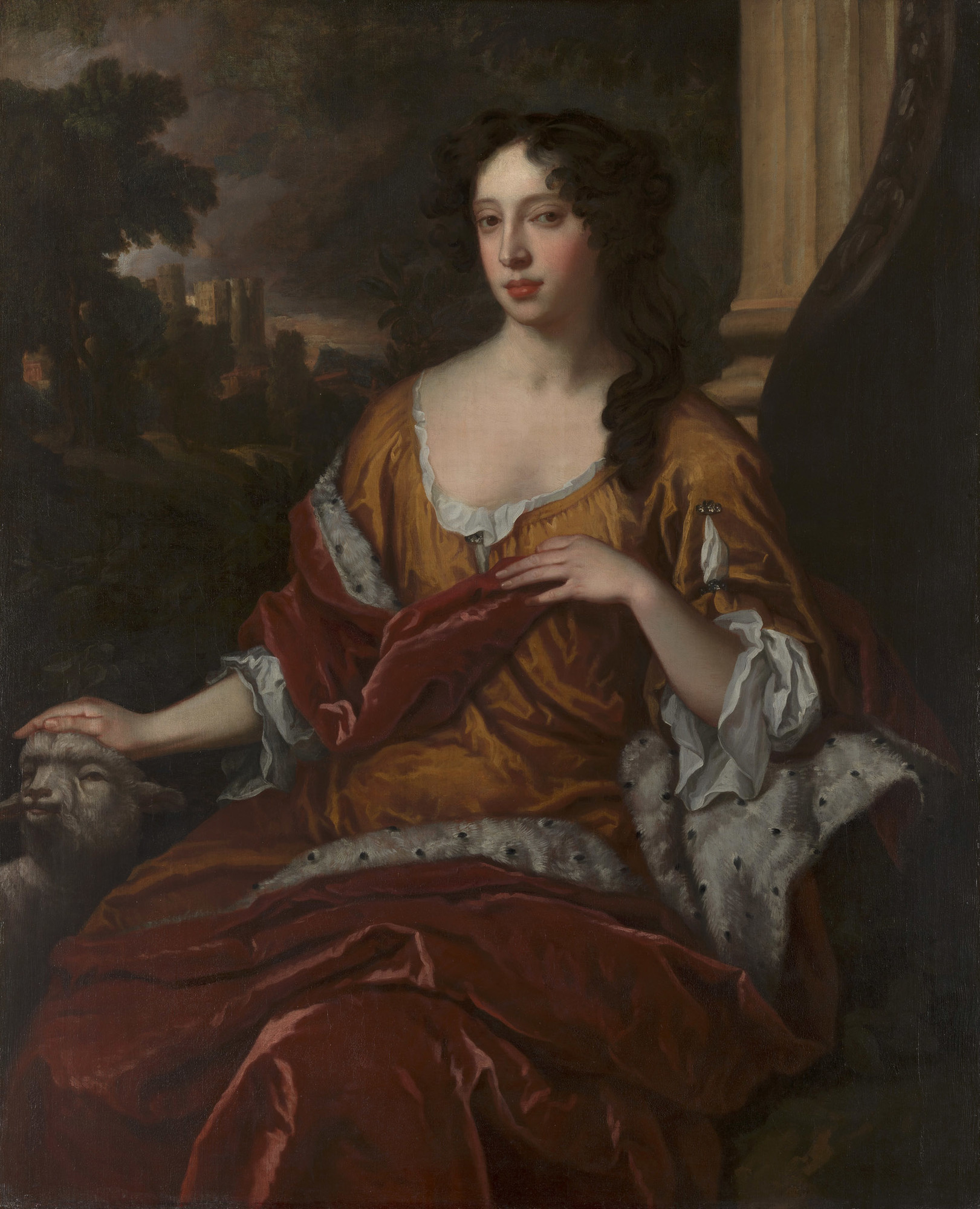
The role and place of portraiture in colonial America was not dissimilar from Old World customs. Portraits did not simply portray the likeness or wealth of the patron; as art historian Margaretta M. Lovell explains, they served to contextualize an individual within familial history. [13] Like English nobility, early American elites sought to present a continuous, idealized heritage to which they could link themselves and bequeath to succeeding generations. Following the Nelsons’ deaths, Elizabeth’s portrait probably passed on to their son, Temple Nelson (ca. 1700–1739). An inventory of his possessions, taken after his death, lists three “large family portraits.” Likely included among them was his mother’s portrait, which remained in the family line until the twenty-first century. [14]
Now kept in the exhibitions gallery of Preservation Long Island, Elizabeth Tailer Nelson is observant of all good form in Early Modern portraiture. The sitter is centered, and the viewer’s gaze is not distracted by background noise save for a symbolic pet squirrel and an improbable window scene—but a closer look reveals the “background parade” of transatlantic colonial America lurking beneath its carefully crafted surface.
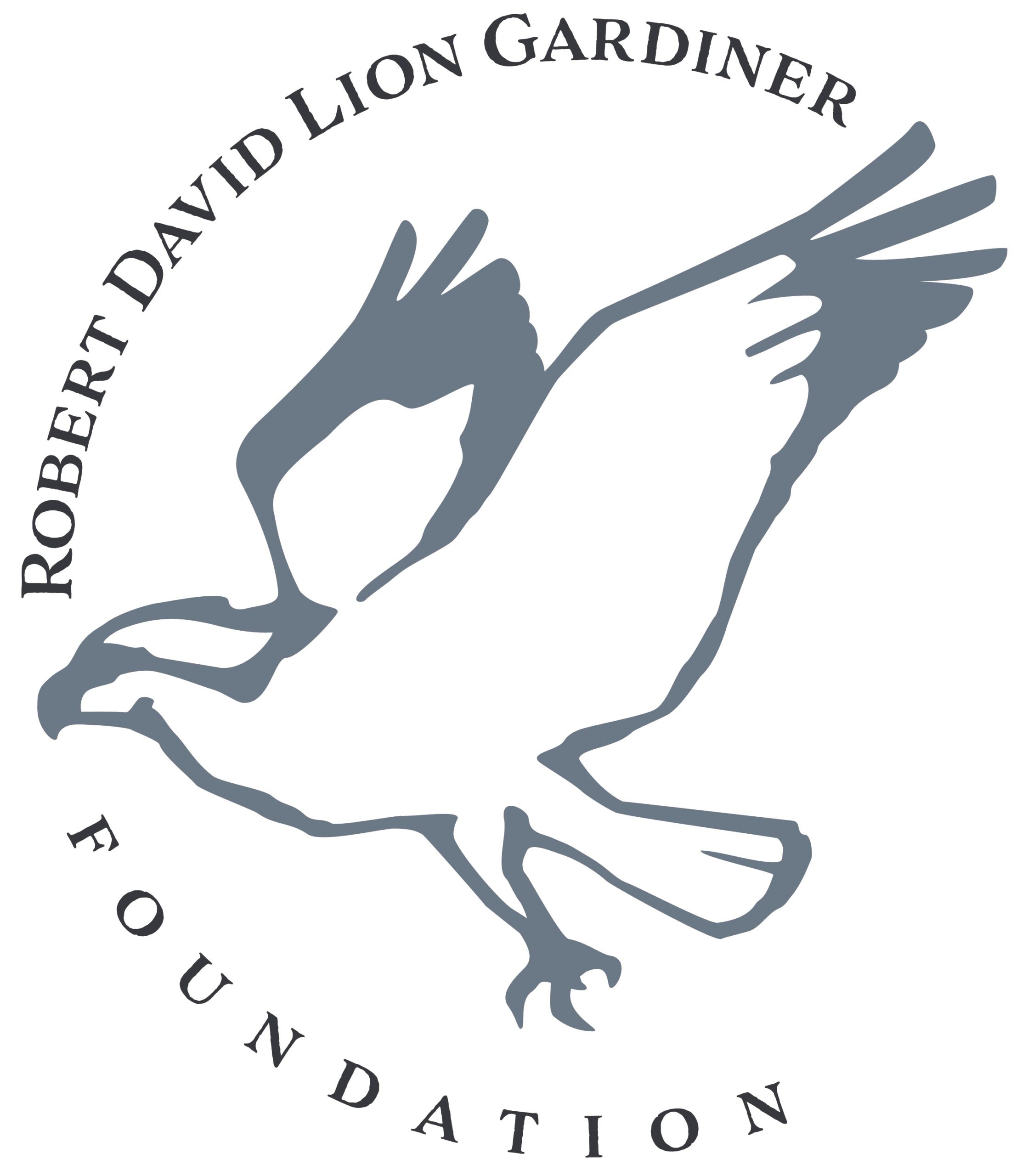
By Nicholas Vega
Collections and Curatorial Intern
2023 Gardiner Young Scholar
